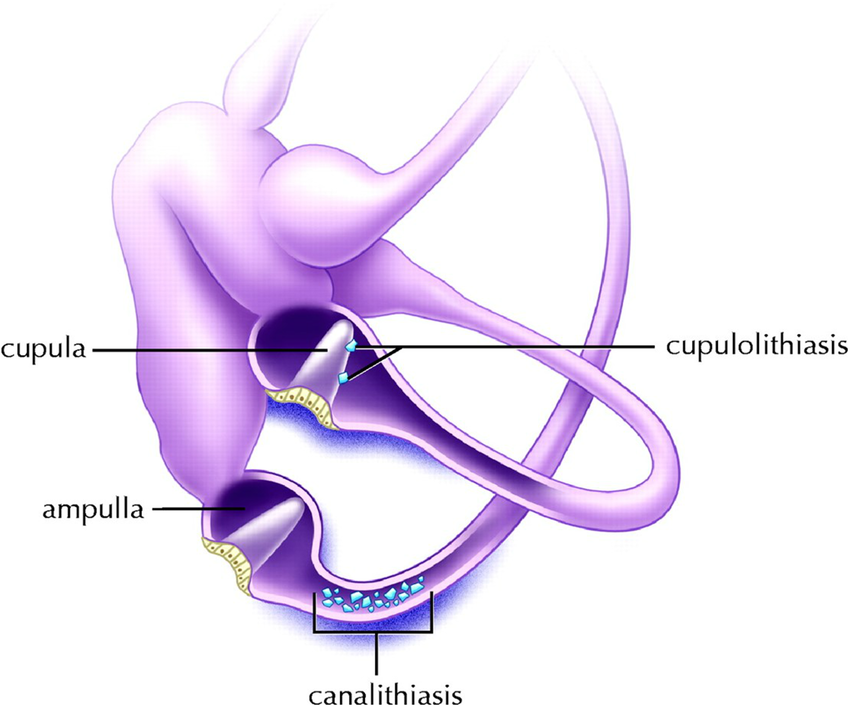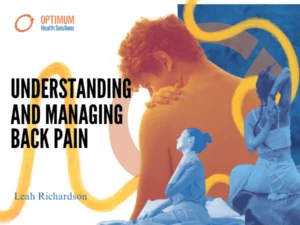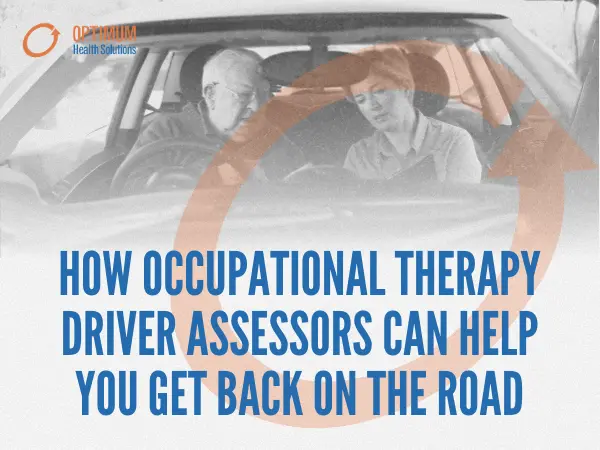how can Physiotherapy be of benefit?
Benign Positional Paroxysmal Vertigo (BPPV) is the most common cause of vertigo, a symptom that involves the sense that your surroundings are spinning. It results from a disturbance within the vestibular system situated in the inner ear. Before we go any further, let’s look at some anatomy.
Anatomy:
Within the inner ear is a sensory system known as the vestibular labyrinth, which contributes to the detection of body motion, head position and spacial awareness. This labyrinth contains three semicircular canals, which are tubes situated in different planes, allowing for the detection of the head movements of nodding up and down, shaking side to side, or tilting left and right. These canals contain a fluid known as endolymph. Movement of the head leads to the movement of endolymph through the corresponding canal. The endolymph flows into an expansion known as the ampula, where, via the cupula, it then sends signals to the brain to inform the brain of movement. Along with the semi-circular canals, the adjacent otolith organs detect forward and backward movement of the head, along with gravitational forces. They detect movement when small crystals of calcium carbonate, known as otoconia, shift in response to movement.
BPPV is believed to arise due to the displacement of these otoconia. It can be classified as cupulolithiasis or canalithiasis. Canalithiasis occurs when the otoconia are loose within the semicircular canals, while the rarer condition, Cupulolithiasis, occurs when the otoconia adhere to the cupula. The displacement of these crystals affects the movement of endolymph through the canals, affecting the signals sent to the brain regarding head movement and position. The resulting mismatch in signals between the left and right sides leads to the sensation of vertigo.

In canalithiasis, vertigo episodes are typically short lasting as the endolymph and otoconia quicky come to a rest, however in cupulolithiasis, symptoms do not resolve until the head is moved out of the provocative position, as the adhered otoconia continue to displace the hair cells. Both conditions are associated with other symptoms that may last for extended periods of time. These symptoms may include:
– Nausea
– Vomiting
– Light headedness
– Fear of falling
– Blurred vision
– Headache
– Loss of balance
BPPV may arise with no obvious cause. However, it may also come about as a result of a concussion, inner ear infection, disease, surgery or other forms of trauma. Episodes of vertigo may be triggered by seemingly trivial movements, such as tilting the head, rolling over in bed, or a sudden head motion.
Diagnosis and Treatment:
Fortunately, BPPV can be easily diagnosed and treated with simple safe and non-invasive positional procedures. Following an in-depth subjective interview, a number of diagnosis manoeuvres can be implemented to obtain a specific diagnosis to allow for targeted treatment and care. Early diagnosis of BPPV is important in allowing a return to an improved quality of life, and reduce the risk of ongoing vertigo episodes associated risk of falls.
Similarly, a number of positional treatment manoeuvres exist which may provide instant and long-lasting resolution of symptoms. The manoeuvres implemented will depend on which semicircular canal is involved. In addition, a number of vestibular rehabilitation exercises may be implemented to reduce the symptoms of BPPV. These may focus on postural control, stability of gaze, walking balance, and fall prevention.

Customised Rehabilitation Plans:
Physiotherapy is an essential element of BPPV rehabilitation. Physiotherapists at Optimum Health Solutions work with our clients to tailor their rehabilitation plan to the individual, recognising their unique needs and goals. This personalised approach improves the likelihood of a successful recovery and safe return to daily life activities.
If you need a physiotherapist, you can book an appointment here or by calling (02) 8599 6584.
REFERENCES:
Bhattacharyya, N., Baugh, R. F., Orvidas, L., Barrs, D., Bronston, L. J., Cass, S., Chalian, A. A., Desmond, A. L., Earll, J. M., Fife, T. D., Fuller, D. C., Judge, J. O., Mann, N. R., Rosenfeld, R. M., Schuring, L. T., Steiner, R. W., Whitney, S. L., & Haidari, J. (2008). Clinical practice guideline: Benign paroxysmal positional vertigo. Otolaryngology–Head and Neck Surgery, 139(S5), 47–81. https://doi.org/10.1016/j.otohns.2008.08.022
Sandhaus, S. (2002). Stop the spinning: Diagnosing and managing vertigo. The Nurse Practitioner, 27(8), 11–23. https://doi.org/10.1097/00006205-200208000-00003
Zuma e Maia, F. (2016). New treatment strategy for apogeotropic horizontal canal benign paroxysmal positional vertigo. Audiology Research, 6(2), 163. https://doi.org/10.4081/audiores.2016.163




Long-Term Effects of Poor Gait Patterns in Chronic Neurological Conditions










